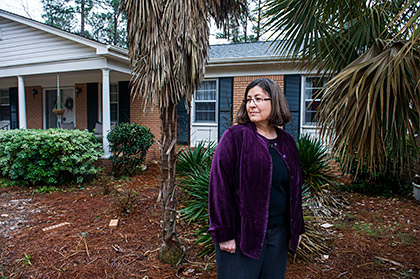AARP Hearing Center

By Linda H. Lamb
South Carolina weather can be extreme, from a historic low of minus 19 degrees to an all-time high of 113.
Electric bills can fluctuate as wildly as the thermometer, but a billing program offered by South Carolina Electric & Gas (SCE&G) aims to smooth out the highs and lows to help consumers. AARP South Carolina is helping to promote the practice, called Budget Billing.
Ann Maletic, 58, a retired state government program manager, said she likes the program, which projects costs and divides them into 12 equal monthly payments. “I do appreciate that it’s the same amount every month,” said Maletic, of Columbia. “It makes it predictable.”
In December 2013, SCE&G agreed to scrap its previous default billing practice, called the Electric Weather Normalization Adjustment. Critics said it was too complex and made bills fluctuate too much. AARP South Carolina helped lead opposition to the plan during 2012 hearings before the Public Service Commission on the utility’s rate hike request.
The PSC approved ending the program and backed the utility’s plan to spend $300,000 to promote Budget Billing.
“We see it as a win for consumers,” said Patrick Cobb, AARP South Carolina communications director. “Often folks are on fixed incomes, seeing only small cost-of-living increases for Social Security and rising prices for food and shelter. So a large power bill hits them hard.”
Bolstering AARP’s case was a report by the state Office of Regulatory Staff, which represents the public interest in utility regulation. The executive director, Dukes Scott, said the old program’s formula was too complicated for his staff, let alone most consumers, to fully understand. Calculations were based on 15-year temperature averages and 19 equations, among other factors.
“If a customer brought their bill to our office and asked us to make sure it was correct, we couldn’t do it,” Scott said.
An incentive to conserve
That program began in 2010 as an effort by SCE&G to protect its 675,000 users from spikes in their bills during extreme weather. The Office of Regulatory Staff conceded that some customers saved money under the program, but the complicated formula used to determine rates made savings difficult to quantify.
Acknowledging the program’s complexity, SCE&G filed a petition to end it, supported by AARP, the Office of Regulatory Staff and the South Carolina Small Business Chamber of Commerce. The program ended in January.
Nearly 100,000 customers already use Budget Billing. Monthly bills also show actual energy usage and charges.
After 12 months, customers face an additional charge if actual use was more than their monthly payments, or they receive a credit if they used less than projected. Cobb and Scott said Budget Billing could encourage conservation, because people can see a clear connection between using less energy and saving money.
In Maletic’s home, the thermostat already stays at a thrifty 68 degrees in winter and 78 degrees in summer. But she said that Budget Billing provides an extra incentive to conserve energy. When she and her husband added extra insulation to their attic, their electric bill went down more than $10 per month.
“You can make improvements, and then, when it comes time to make the adjustment, you can feel good about it,” she said.
For more information about enrolling in SCE&G’s Budget Billing program, call 800-251-7234 or go to sceg.com/budgetbilling.
Linda H. Lamb is a writer living in Columbia































































